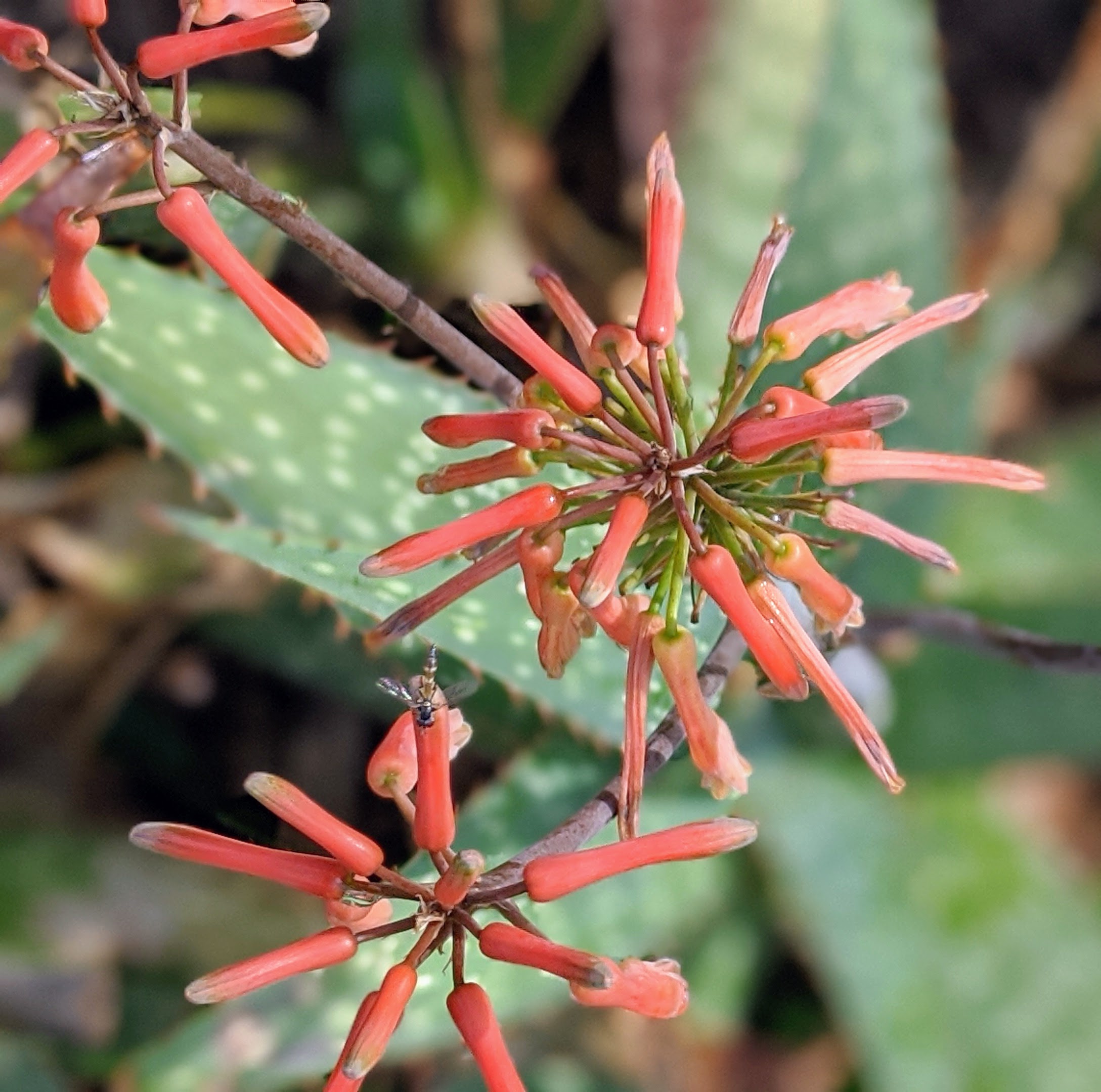
We have a few roos around the house. The vase this week is a Fitz and Floyd coffee cup I found irresistible in the 80s. I found it on a fantastic sale and decided it would be my cute work coffee cup. The kangaroo looks a bit demented, so this was a perfect desk accessory for a design office. I soon realized the reason it was on sale – the kangaroo hits you in the face when you drink out of the cup. It was reassigned to pencil holding duties.
The other rooing around the house is from Fiona the greyhound. Rooing is a peculiar greyhound tradition. Fiona is a dog with a schedule. Every afternoon around 4:30, we all roo (sing with the dog)
Fiona in action:

Vase details:

Blue flowers in the foreground are ‘Blue Daze’ Evolvulus; yellow spikes are Thyrallis (Galphimia glauca); pink and white spikes are Tropical Red Salvia (Salvia coccinea); blue spikes are ‘Mystic Blue’ Salvia.
Another view:

Background spikes are Sabal Palm (Palmetto sabal) seedling bits and the off white bendys are Juba Bush (Iresine diffusa), a native wildflower with a nice fragrance. One of those things that has to choose where it will live.
Thanks to Cathy at http://ramblinginthegarden.wordpress.com for hosting this weekly event. Follow the link to see more vases.











































